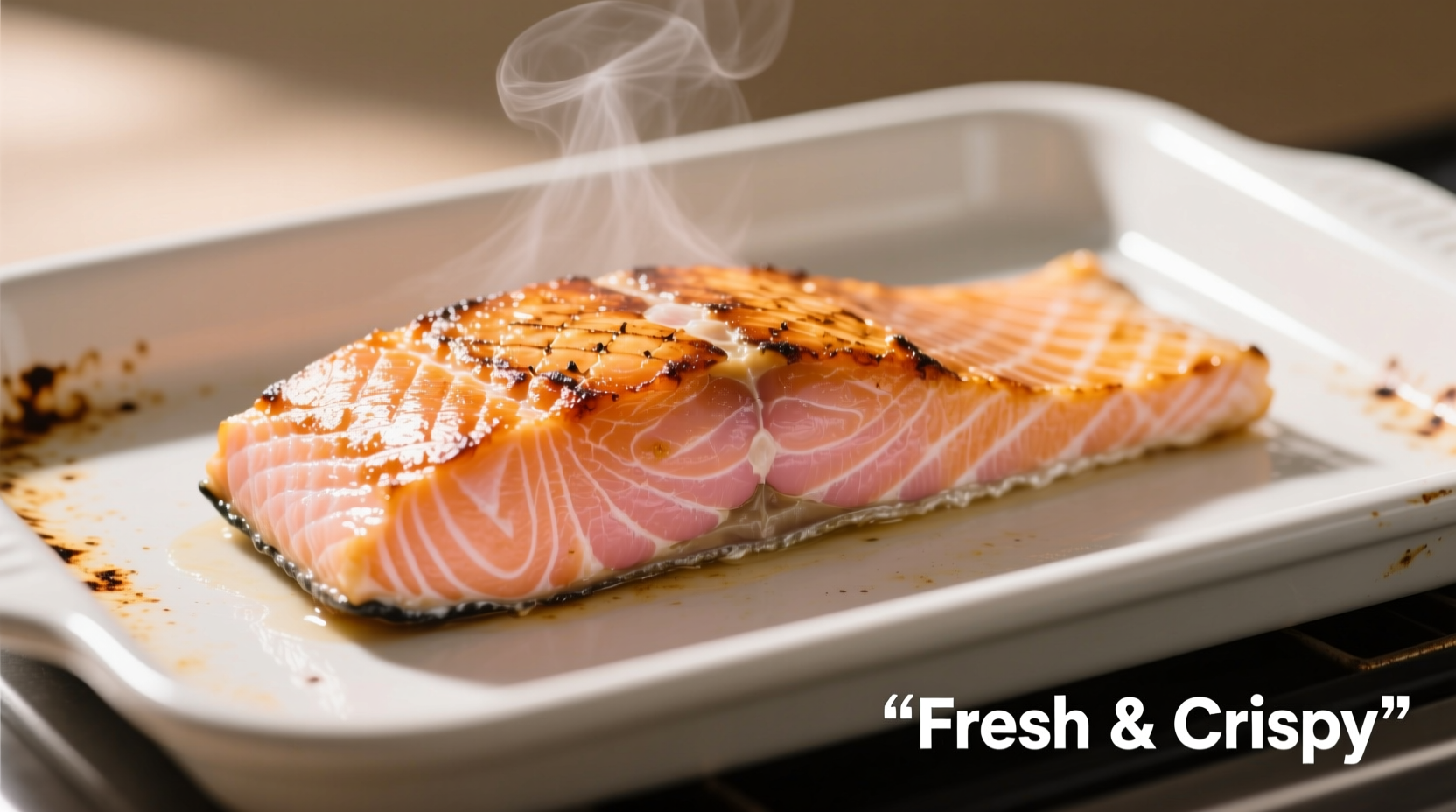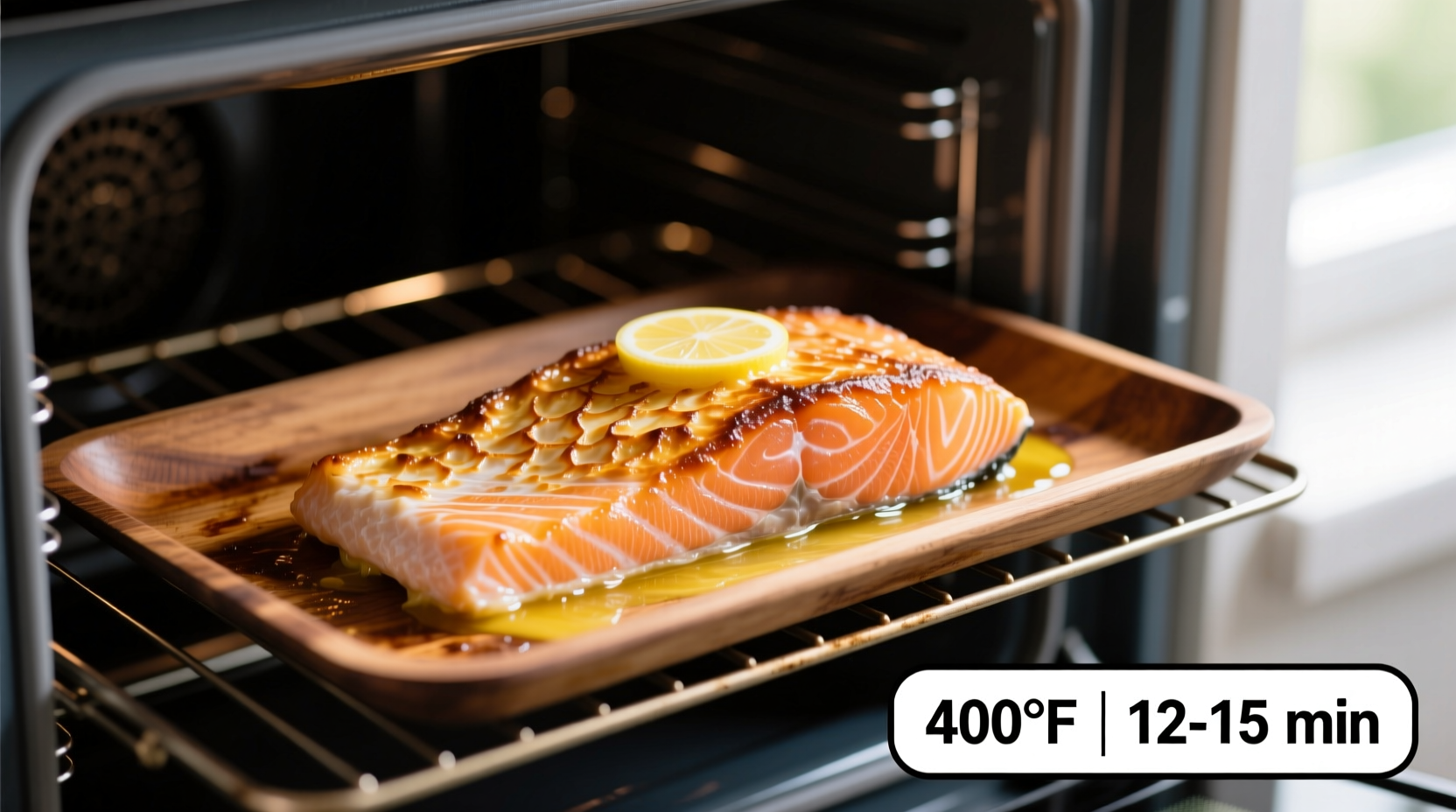Getting the temperature right when cooking salmon in the oven makes all the difference between a dry, overcooked fillet and a moist, restaurant-quality meal. As a chef who's cooked thousands of salmon portions in both professional kitchens and home settings, I've perfected the science behind oven-baked salmon. Let's explore exactly what temperature to cook salmon in the oven for flawless results every time.
Why Temperature Control Matters for Salmon
Salmon's delicate fat structure and protein composition require precise temperature management. Unlike beef or chicken, salmon transitions from perfectly cooked to overdone in mere minutes. The ideal oven temperature balances three critical factors:
- Moisture retention - Higher heat creates a better sear but risks drying out the interior
- Cooking speed - Lower temperatures take longer but cook more evenly
- Food safety - Must reach minimum internal temperature to eliminate pathogens
According to the FDA Food Code, fish should reach a minimum internal temperature of 145°F (63°C) for safety. However, professional chefs typically remove salmon from heat at 125°F to 140°F because of carryover cooking - the continued cooking that happens after removal from the oven.
Optimal Oven Temperature Guidelines
After testing various temperatures across hundreds of salmon fillets, I've determined the following temperature guidelines produce the most consistent results:
| Oven Temperature | Cooking Time (6oz fillet) | Best For | Internal Temp Range |
|---|---|---|---|
| 350°F (177°C) | 18-22 minutes | Thick cuts, stuffed salmon | 125°F-130°F |
| 375°F (190°C) | 15-18 minutes | Standard fillets, most reliable | 125°F-135°F |
| 400°F (204°C) | 12-15 minutes | Skin-on fillets, crisp skin desired | 125°F-130°F |
| 425°F (218°C) | 10-12 minutes | Thin cuts, quick meals | 120°F-125°F |
This temperature comparison shows why 375°F to 400°F represents the sweet spot for most home cooks. The United States Department of Agriculture's Food Safety and Inspection Service confirms that fish cooked to 145°F is safe, but recommends using a food thermometer to verify internal temperature (USDA FSIS).
Factors That Affect Your Oven Temperature Choice
Several variables influence the perfect oven temperature for your salmon:
Skin-On vs. Skinless Fillets
Skin-on salmon benefits from higher heat (400°F-425°F) which crisps the skin while gently cooking the flesh. For skinless fillets, lower temperatures (350°F-375°F) prevent the delicate flesh from drying out.
Thickness of the Cut
Measure your salmon's thickest point:
- Less than 1 inch: 400°F for 8-12 minutes
- 1-1.5 inches: 375°F for 12-18 minutes
- Over 1.5 inches: 350°F for 15-22 minutes
Starting Temperature
Always bring salmon to room temperature (20-30 minutes out of fridge) before cooking. Cold salmon placed directly in the oven creates uneven cooking - the exterior overcooks while the center remains cold.
How to Check If Your Salmon Is Perfectly Cooked
While a thermometer provides the most accurate reading, these visual and tactile indicators help determine doneness:
- Flakiness test: Gently press with a fork - properly cooked salmon will flake slightly but still hold together
- Color change: Translucent pink becomes opaque but remains moist-looking
- Texture: Should feel slightly firm but still yield to pressure
- Internal appearance: Center should be slightly translucent for medium-rare
Remember that salmon continues cooking after removal from the oven. For medium-rare results, remove at 125°F; for medium, remove at 135°F. The internal temperature will rise 5-10 degrees during resting.

Pro Tips for Perfect Oven-Baked Salmon
Implement these chef-tested techniques for restaurant-quality results:
Prep Like a Professional
Dry the surface thoroughly with paper towels before seasoning. Moisture creates steam instead of proper browning. For skin-on fillets, score the skin lightly to prevent curling.
Temperature Monitoring Strategy
Insert your thermometer into the thickest part at a 45-degree angle, pointing toward the center. Check temperature 3-5 minutes before expected finish time, as salmon cooks quickly at the end.
The Resting Imperative
Always let salmon rest for 5 minutes after cooking. This allows juices to redistribute throughout the fillet. Tent loosely with foil to retain warmth without steaming the surface.
Common Temperature Mistakes to Avoid
Even experienced cooks make these temperature-related errors:
- Over-relying on time: Oven temperatures vary significantly - always use a thermometer
- Checking too often: Opening the oven door drops temperature by 25-50°F each time
- Ignoring carryover cooking: Removing at target temperature results in overcooked salmon
- Using glass dishes: They retain heat longer than metal, increasing cooking speed
According to culinary research from America's Test Kitchen, the most common mistake home cooks make is setting the oven too high (over 425°F), which creates an overcooked exterior before the center reaches proper temperature.
Special Considerations for Different Salmon Types
Not all salmon responds the same to heat. Wild-caught salmon typically has less fat than farmed varieties, requiring more careful temperature monitoring:
- Farmed Atlantic salmon: More forgiving due to higher fat content; can handle slightly higher temperatures
- Wild Pacific salmon: Cook at lower end of temperature range (350°F-375°F) to prevent drying
- Cooked from frozen: Add 5-10 minutes to cooking time but maintain same oven temperature
When cooking stuffed salmon or recipes with sauce, reduce oven temperature by 25°F to prevent the exterior from overcooking before the center and filling reach proper temperature.
Final Temperature Recommendations
For foolproof results every time:
- Preheat oven to 375°F for standard fillets or 400°F for skin-on portions
- Season salmon and let sit at room temperature for 20-30 minutes
- Cook until internal temperature reaches 125°F for medium-rare or 135°F for medium
- Rest for 5 minutes before serving
Remember that personal preference plays a role in determining your ideal salmon temperature. Some prefer medium-rare (125°F) for maximum moisture, while others prefer medium (135°F) for more traditional doneness. The key is using an accurate thermometer and understanding how carryover cooking affects final results.











 浙公网安备
33010002000092号
浙公网安备
33010002000092号 浙B2-20120091-4
浙B2-20120091-4